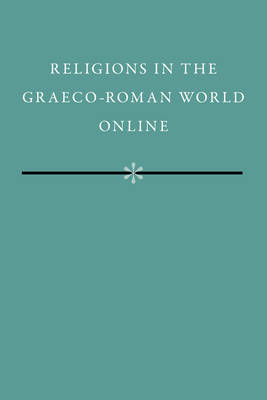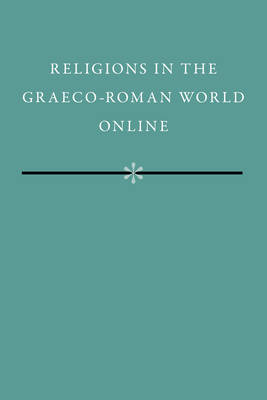
- Afhalen na 1 uur in een winkel met voorraad
- Gratis thuislevering in België vanaf € 30
- Ruim aanbod met 7 miljoen producten
- Afhalen na 1 uur in een winkel met voorraad
- Gratis thuislevering in België vanaf € 30
- Ruim aanbod met 7 miljoen producten
Zoeken
Ägyptisches Kulturgut Im Phönikischen Und Punischen Sardinien (2 Vols.)
I. Textteil. II. Anmerkungen, Indizes Und 188 Tafeln
Günther Hölbl
€ 758,95
+ 1517 punten
Omschrijving
From the early part of the first century BC, Egyptian cultural artefacts spread to an increasing degree into Palestine and Syria and (via the Greeks and Phoenicians) into the Greek, Italian and Western Phoenician spheres.
Following a presentation of the Near Eastern background and a survey of Sardinian findspots, this work lists the types of monument found on Sardinia (from the 8th c. to the Roman period). In the case of both amulets (gods in human and animal form) and scarabs made if steatite and fayence an attempt is made, using a carefully developed typology (both of material and form) and other statistical criteria, to derive a characterisation of groups of differing origin (Egyptian, Eastern Phoenician, Punic). These objects reflect the expansion and adaptation of polupar Egyptian magic. Even the Egyptian motifs on hard-stone Punic scarabs and precious-metal artefacts have a religious significance, which is very closely related to Egyptian concepts. In the same way the Egyptian elements on Punic steles and portions of architecture underline their sacral character.
This study pursues methodological goals using evidence from the whole of Mediterranean area.
Following a presentation of the Near Eastern background and a survey of Sardinian findspots, this work lists the types of monument found on Sardinia (from the 8th c. to the Roman period). In the case of both amulets (gods in human and animal form) and scarabs made if steatite and fayence an attempt is made, using a carefully developed typology (both of material and form) and other statistical criteria, to derive a characterisation of groups of differing origin (Egyptian, Eastern Phoenician, Punic). These objects reflect the expansion and adaptation of polupar Egyptian magic. Even the Egyptian motifs on hard-stone Punic scarabs and precious-metal artefacts have a religious significance, which is very closely related to Egyptian concepts. In the same way the Egyptian elements on Punic steles and portions of architecture underline their sacral character.
This study pursues methodological goals using evidence from the whole of Mediterranean area.
Specificaties
Betrokkenen
- Auteur(s):
- Uitgeverij:
Inhoud
- Aantal bladzijden:
- 896
- Taal:
- Duits
- Reeks:
- Reeksnummer:
- nr. 102
Eigenschappen
- Productcode (EAN):
- 9789004071827
- Verschijningsdatum:
- 1/12/1986
- Uitvoering:
- Hardcover
- Formaat:
- Genaaid
- Afmetingen:
- 155 mm x 235 mm
- Gewicht:
- 1627 g

Alleen bij Standaard Boekhandel
+ 1517 punten op je klantenkaart van Standaard Boekhandel
Beoordelingen
We publiceren alleen reviews die voldoen aan de voorwaarden voor reviews. Bekijk onze voorwaarden voor reviews.








